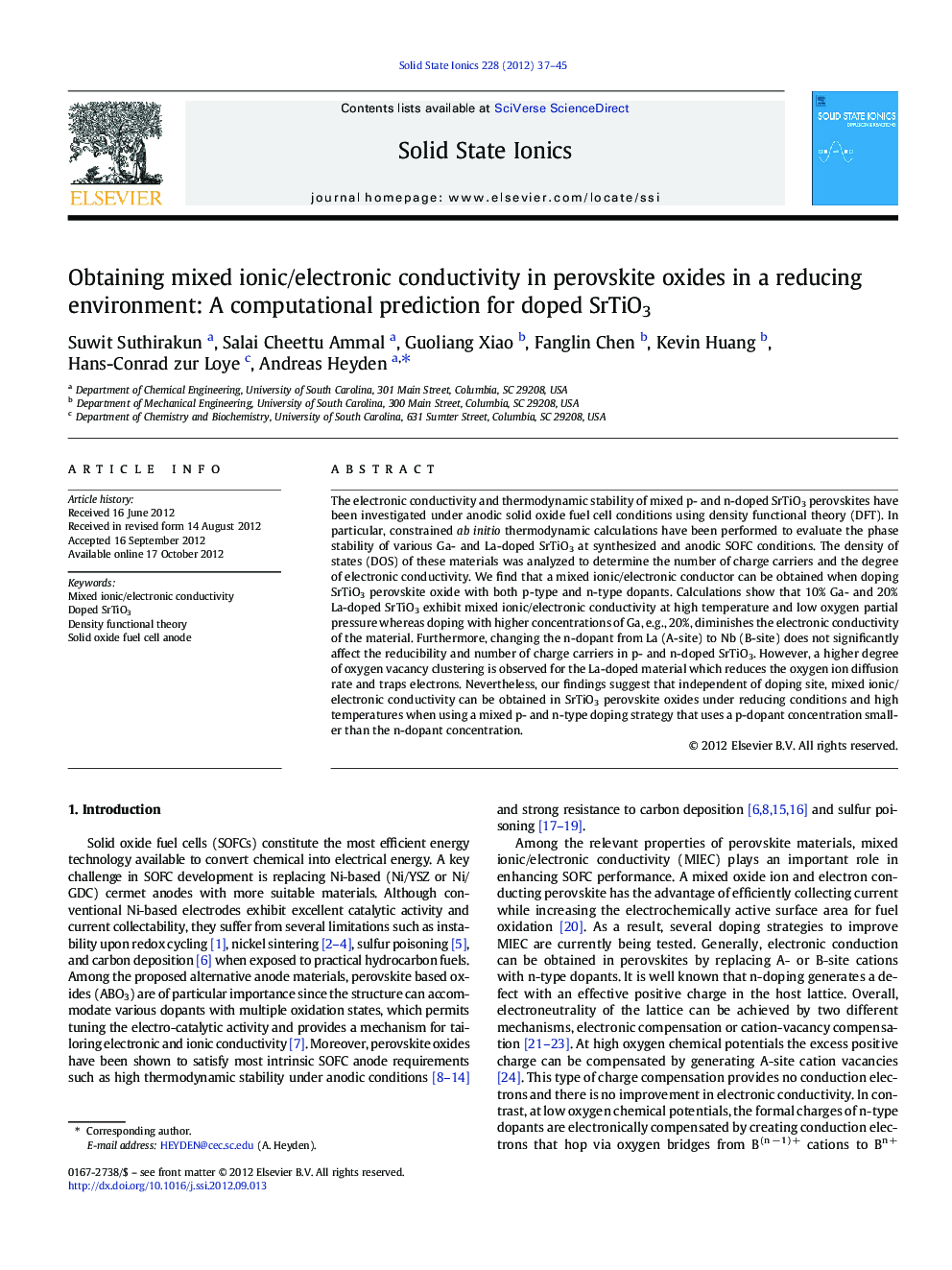| Article ID | Journal | Published Year | Pages | File Type |
|---|---|---|---|---|
| 1294177 | Solid State Ionics | 2012 | 9 Pages |
The electronic conductivity and thermodynamic stability of mixed p- and n-doped SrTiO3 perovskites have been investigated under anodic solid oxide fuel cell conditions using density functional theory (DFT). In particular, constrained ab initio thermodynamic calculations have been performed to evaluate the phase stability of various Ga- and La-doped SrTiO3 at synthesized and anodic SOFC conditions. The density of states (DOS) of these materials was analyzed to determine the number of charge carriers and the degree of electronic conductivity. We find that a mixed ionic/electronic conductor can be obtained when doping SrTiO3 perovskite oxide with both p-type and n-type dopants. Calculations show that 10% Ga- and 20% La-doped SrTiO3 exhibit mixed ionic/electronic conductivity at high temperature and low oxygen partial pressure whereas doping with higher concentrations of Ga, e.g., 20%, diminishes the electronic conductivity of the material. Furthermore, changing the n-dopant from La (A-site) to Nb (B-site) does not significantly affect the reducibility and number of charge carriers in p- and n-doped SrTiO3. However, a higher degree of oxygen vacancy clustering is observed for the La-doped material which reduces the oxygen ion diffusion rate and traps electrons. Nevertheless, our findings suggest that independent of doping site, mixed ionic/electronic conductivity can be obtained in SrTiO3 perovskite oxides under reducing conditions and high temperatures when using a mixed p- and n-type doping strategy that uses a p-dopant concentration smaller than the n-dopant concentration.
► Investigated stability and electronic conductivity of mixed p- and n-doped SrTiO3. ► Ga- and La-doped SrTiO3 exhibits maximum in conductivity with Ga concentration. ► Number of charge carriers in p- and n-doped SrTiO3 independent of n-doping site. ► Mixed ionic/electronic conductivity can be obtained in SrTiO3 perovskite oxides. ► p-Dopant concentration should be smaller than n-dopant concentration.
